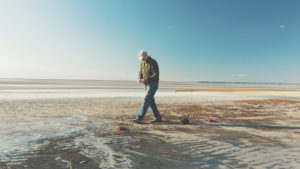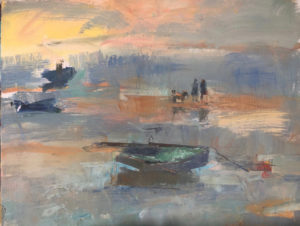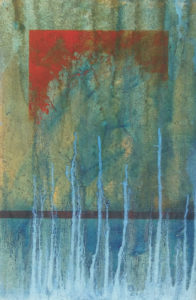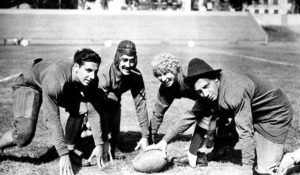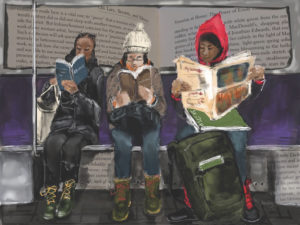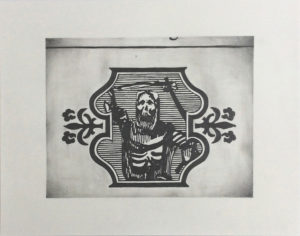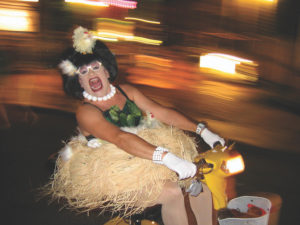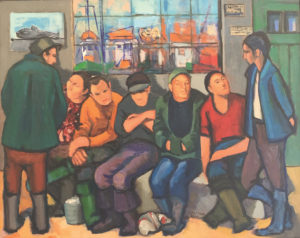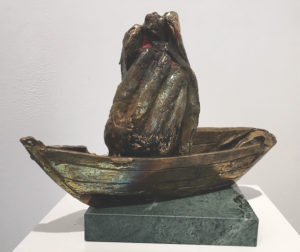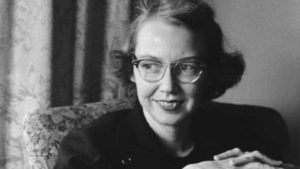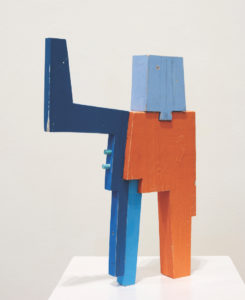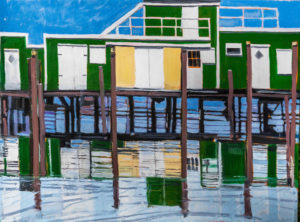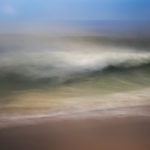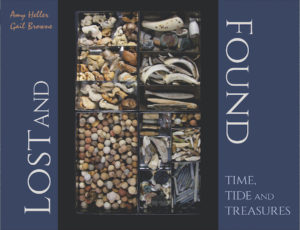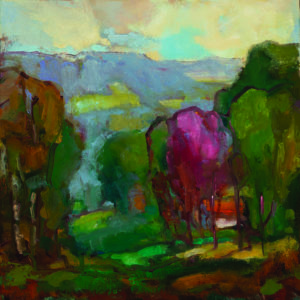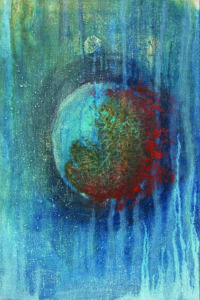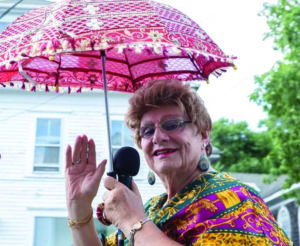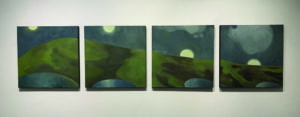Provincetown artist Larry Collins stands over the kitchen sink in his apartment on Alden Street stirring an iced coffee. Every turn of the spoon is considered. Collins’s hair is neatly combed. He wears thick-rimmed dark-brown glasses and a starched white button-down shirt.

Rows of art books fill the shelves covering Collins’s living room wall — everything from Victorian painting to Manet, van Eyck, Poussin, a faded book titled ART NOW, and Tom of Finland. A glass coffee table holds a book opened to an illustrated skeleton.
Two of his new paintings are included in a three-person show with Alice Denison and Jane Paradise opening Friday at Alden Gallery in Provincetown.
Collins’s career began early — at 17, when Dorothy Miller, former curator of collections at the Museum of Modern Art in New York, selected one of his abstract paintings for a regional exhibition at the Oklahoma Art Center.
He was born in Spokane, Wash. in 1945 and raised in Del City, Okla. His father died when he was five; mentors, teachers, and friends stepped in. In high school, his art teacher, Montee Hoke, gave him supplies and keys to the school so he could sneak into the studio alone at night and paint. Hoke helped Collins enter art competitions and got his work shown on TV and seen in museums.
Collins got his B.F.A. from the University of Oklahoma. During the summers, he lived in an industrial building in Oklahoma City. The painter Paul Maxwell, who owned the building, gave him the room. Maxwell converted the place into painting studios, bronze casting studios, and a print shop.
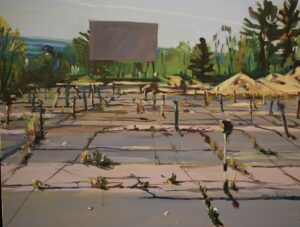
“I slept there at night,” says Collins. “The whole building would be empty except for me.”
Collins graduated in 1967 and was drafted into the Army. He spent more than a year in Vietnam, serving as an infantryman and combat illustrator.
His painting Remember Me bears a note: “Dedicated to the memory of Hubia Jude Guillory, killed in action in Vietnam 25 April 1968.” Flames engulf the background of the painting; Guillory’s eyes are large and alive, though his skin is a cold white.
Collins has been painting and repainting the canvas because the image of Guillory has been haunting his dreams. He started it in 2013 and decided it was finally ready to be shown this year.
Collins also dedicated his painting Vietnam Still Life to the men he knew who died in the war. “A lot of glare on that one,” he says, as the pigments catch the midday sun. Collins started the painting in 1983 and finally finished it in 2015. A Mapplethorpe photo looms in the background. We see a warrior statue with a helmet in camouflage along with a knife.
When Collins came home from the war in 1969, he headed to New York with one green suitcase. “I was deep in the closet,” he says. “I was in New York, but I never availed myself of gay culture.” He got married and then went to Indiana to begin graduate school. After one semester he quit and got a divorce. He moved to Cambridge and came out. “I couldn’t be in there anymore,” he says.
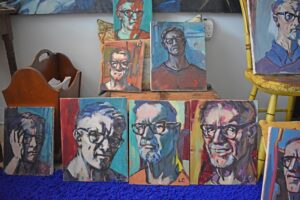
Collins got a job at an electroplating factory, cooking chemicals all day long. “I’m surprised I’m not dead,” he says. “I worked there a year and then quit.” He was drinking heavily at the time.
Collins picked up painting again when he met his partner, Tom Conomacos. He enrolled in the Mass. College of Art and Design to continue his graduate studies. All his classmates were doing conceptual work. “I kept up with my figurative work,” he says. “People came around.”
Collins calls himself a “figurative expressionist.” In Young Man Beside the Sea (after Flandrin) we see a seated male figure, defeated. He is in a surreal waterfront, painting bricks blue.
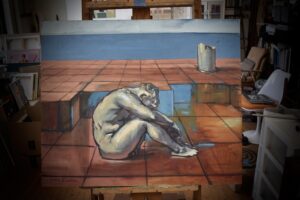
“I was deeply unaware of what was going on with me,” Collins says of his impulse to create figurative work. He was raised in a Pentecostal church. “It was very homophobic,” he says. “The whole region, the whole world was homophobic. You take all that in — it was soul-killing.” Painting the male figure was the beginning of rejecting all that.
“I was doing huge paintings in Boston,” he says, “nine-foot paintings of figures, all sort of mythological. They’re strange.” One of those paintings, Apollo and Marsyas, became the cover of Allen Ginsberg’s 1986 book Old Love Story.
“Apollo could be very cruel,” says Collins. “Marsyas was a satyr who played the pipes. He said, ‘Let’s have a contest and see who plays the best.’ Apollo ended up skinning him alive — Marsyas’s punishment for being so brash. I connected it in my mind to the Vietnam War.”
Conomacos died of AIDS in the late ’80s. Collins moved to Provincetown in 1995. He worked at the Schoolhouse Gallery for years, in charge of the photography gallery up front. He then opened his own gallery, Larry Collins Fine Art, which closed in 2013.
For inspiration, Collins looks to Renaissance painters and Baroque art, Caravaggio and Michelangelo, 19th-century Gericault, and Ingres. This influence can be seen in his works, which are masterful but also haunting.
“I never wanted to be a Provincetown artist,” he says. “I wanted to be in Rome in the 17th century.”
Figurative Expressionist
The event: Works by Larry Collins in a show with Alice Denison and Jane Paradise
The time: Sept. 6 through 26; opening reception Friday, Sept. 6, 7 to 9 p.m.
The place: Alden Gallery, 423 Commercial St., Provincetown
The cost: Free
